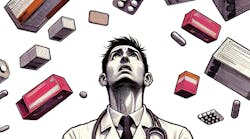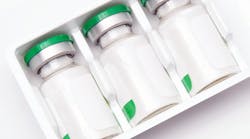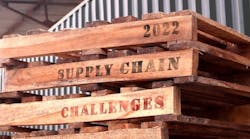The term ‘fit-to-purpose’ gets a lot of airplay in conversations about the design and specifications of packaging line equipment. There's a good reason for that: by applying strict constraints, you get a packaging line that works for today’s needs.
Here’s the thing, though: what happens when those needs evolve? In the world of pharma manufacturing, change is guaranteed — and with it comes the risk that your packaging line won’t keep up. Expansions or extensive renovations often follow. That’s bad for business and even worse for patients, whose lives may depend on your speed-to-market.
The solution: focus on building a flexible packaging line that can adapt to future demands with a few simple adjustments. Here are three strategies to make that happen.
1. Align scope drivers with design specs
The pathway to a flexible production line starts during project planning, when you have the opportunity to build future capabilities into your design specs. The goal is to understand the scope drivers that may impact your packaging line, then lay the groundwork to meet that scope with as little disruption to the base unit as possible.
Often, that means leveraging change parts to handle future formats or shifts in volume. Take a manufacturing facility that’s currently filling 2 mL vials, but has the capacity to fill vials as large as 100 mL. A fit-to-purpose packaging line would be optimized for those 2 mL vials — that’s it. In a fit-to-(future)-purpose line, a few part changeovers would open the door to all possible sizes.
This may require more upfront investment, but it could mean the difference between, say, buying a new cartoner versus retooling your existing one. The result is a greater ROI and fewer delays on the way to market.
2. Plan for flexible material flow
When materials flow smoothly along well-developed pathways, everything from line clearance times to overall equipment utilization improves. Maintaining that flow can get tricky as demands on your packaging line evolve.
Shifts in regulations, marketing demands, and FDA regulatory filing requirements are often behind these evolving demands. Tamper evidence, serialization, patient education materials — when the rules that govern these details change, your packaging line has to change with them.
The same is true as new products enter your pipeline. Some may arrive at the packaging line from a freezer, for example, while others come from ambient storage. Or a prescription product may transition to over-the-counter status, bringing with it whole new labeling needs and materials for your cartons or cases.
A fit-to-(future)-purpose design can prepare you for these shifts by leveraging bypass modes to improve your packaging line’s flexibility. The idea is to design for the full scope of capabilities that you will need in the future, then introduce the ability to start or stop particular actions as products are conveyed through the packaging process.
As a result, you benefit from the best of both worlds: a fit-to-purpose flow for each product, with the ability to rapidly adapt alongside shifting needs while minimizing your future costs.
3. Consider the footprint needed for future automation
For many manufacturers, it’s not only new products or new regulations that drive change in their packaging line — it’s access to new technologies and/or growth in product demand, which drives higher throughput.
The challenge is that automated technologies require more room than manual operations. Even if you aren’t adding automation right away, designing these future integrations into your master plan from day one is critical. That could mean including space next to your conveyor for a robotic arm, or leaving enough clearance at the end of a palletizer to accommodate an automated guided vehicle.
This proactive strategy could spare you from extensive retrofits in the future, and help you quickly unlock the benefits of new technologies.
Keep the future in focus
The bottom line: when designing your packaging line, scope out your future needs and align your space, equipment, and functionality accordingly. This will give you a packaging line that’s exactly right today and tomorrow. For the patients who depend on the therapies leaving your facility, this is the way forward.





